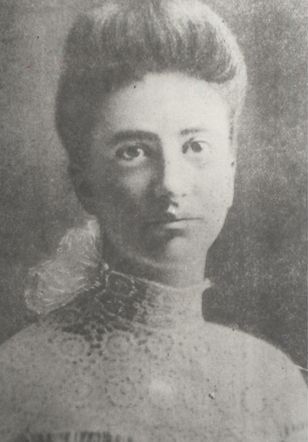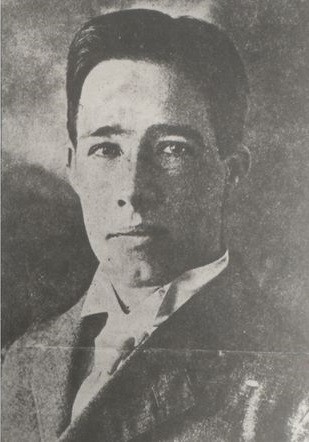Each year, children eagerly dressed up as the person/thing of their choice and trick-or-treat. After the fun is over, a common tradition is consuming a few pieces of the candy received. Unfortunately, for Timothy O’Brien the night ended in tragedy.
Ronald Clark O’Bryan and Daynene had two children: Timothy, 8, and Elizabeth, 5. They resided in Deer Park, Texas. Ronald worked as an optician at Texas State Optical Company. He was amidst some serious financial problems. The family had been forced to sell their home to help pay for loans. Ronald discussed his money troubles with friends and acquaintances, telling some of them that he would receive some money at the end of the year.
O’Bryan decided to make the decision to increase the life insurance coverage on his children. By mid-October, both children had 30,000 on their name. O’Bryan and his wife, on the contrary, had minimal coverage to their names.
In August 1974, he discussed the varieties and availabilities of cyanide, which is known to have a bitter almond taste, with a friend who worked at Arco Chemical Company. He also discussed the subject with his coworkers. Shortly before Halloween, O’Bryan went to Curtin Matheson Scientific Company, which was a chemical outlet in Houston. Upon hearing that the company sold cyanide in large quantities, he inquired where he could get some in a smaller amount.
On that Halloween, the O’Bryan’s dined at the home of Jim Bates, a family friend who lived in Pasadena. The Bates and O’Bryan children had planned to go trick-or-treating in Bates’ neighborhood.
Despite the lights being off at a particular house, O’Bryan and the children went up to the home anyway. When no one answered the door, the children went on to the next house. O’Bryan, however, stayed back for around thirty seconds. He then went up to the children and produced five pixie sticks about 20 inches long. He gave one to each child and gave the last one to a boy came to trick or treat at that door. As to where he got the pixie sticks, O’Bryan claimed that the “rich neighbors” had given it to him.
After the children got home from the festivities, O’Bryan told his children that they could eat one piece of candy before going to bed. Timothy chose the pixie stick. He was having trouble opening the tube, so O’Bryan rolled the stick in his hand to help him open it. Upon consuming some of the stick, Timothy complained that it was bitter tasting. O’Bryan then gave Timothy some Kool-Aid to help wash the stick’s contents down.
Immediately, Timothy ran to the bathroom and started vomiting. When he started having convulsions, O’Bryan called for an ambulance. Timothy died with an hour after his arrival at the hospital.
Fear and Panic
Naturally, Timothy’s death cause fear in the community around them. Investigators told the public that they should bring the candy in if it looked suspicious. They wound up a lot of candy because of the fear that it was poisoned.
An autopsy found that Timothy’s stomach contained 16 milligrams and blood contained .4 milligrams of cyanide. The lethal dose is 0.2 – 0.3 milligrams. They found the pixie stick to contain two inches cyanide.
Officers worked to collect the remaining pixie sticks and luckily collected the rest of them. One of the sticks was holding the candy, asleep. The boy had been unable to undo the staples on the candy. A test was done and it showed that the rest of the sticks also had two inches of cyanide at the top
An Investigation
Investigators found out that O’Bryan would receive 40,000 if Timothy died and that his wife had no clue about this policy. They also found out that O’Bryan had to sell his home because he was in debt. They looked through the family home and found O’Bryan’s knife with traces of candy and plastic on the blade.
When O’Bryan was brought in for questioning, he first told the investigator that he did not know which house or street the pixie sticks were from. He also told them that he did not know the person. This confused investigators because the group had only gone on two streets.
O’Bryan finally showed the house that he had gotten the candy from. It belonged to a man named Courtney Melvin. However, Melvin was not in his home until 11 pm on the night of Halloween. He had been working at Hobby Airport and had many people able to vouch for him.
An Arrest and Trial
Ronald O’Bryan was arrested on November 4, 1974 and charged with the murder of the murder of Timothy O’Bryan. He never admitted to killing his son and plead not guilty.
During the trial, physical evidence was used along with the testimony of the O’Bryan’s wife, the chemist, and coworkers. The jury took less than an hour to deliberate and 71 minutes to sentence O’Bryan to death.
O’Bryan was dubbed the “Candy Man” by fellow inmates, not to be confused by the Texan killer “Candyman.” He appealed his case many times but they were all rejected. His final meal was a well done steak and Boston cream pie. O’Bryan was then injected with a cocktail of drugs more lethal than electrocution or cyanide gas. He was declared dead on March 30, 1984.
The Aftermath
Timothy O’Bryan’s death changed the community. People were more careful about the candy their children received and, for many years, Houston was not allowed to go trick or treating for years after the event.
Sources
Ronald Clark O’Bryan
‘Man Who Ruined Halloween’: Recounting the horror story of the notorious ‘Candyman’
35 years later, memories of the notorious Halloween “Candyman: murder remains vivid
https://www.courtlistener.com/opinion/423527/ronald-clark-obryan-v-wj-estelle-jr-director-texas-department-of/?q=ronald%20clark
https://www.courtlistener.com/opinion/1793039/obryan-v-state/?q=ronald%20clark
The Haunting Legacy of Ronald Clark O’Bryan, the Man Who Killed Halloween

